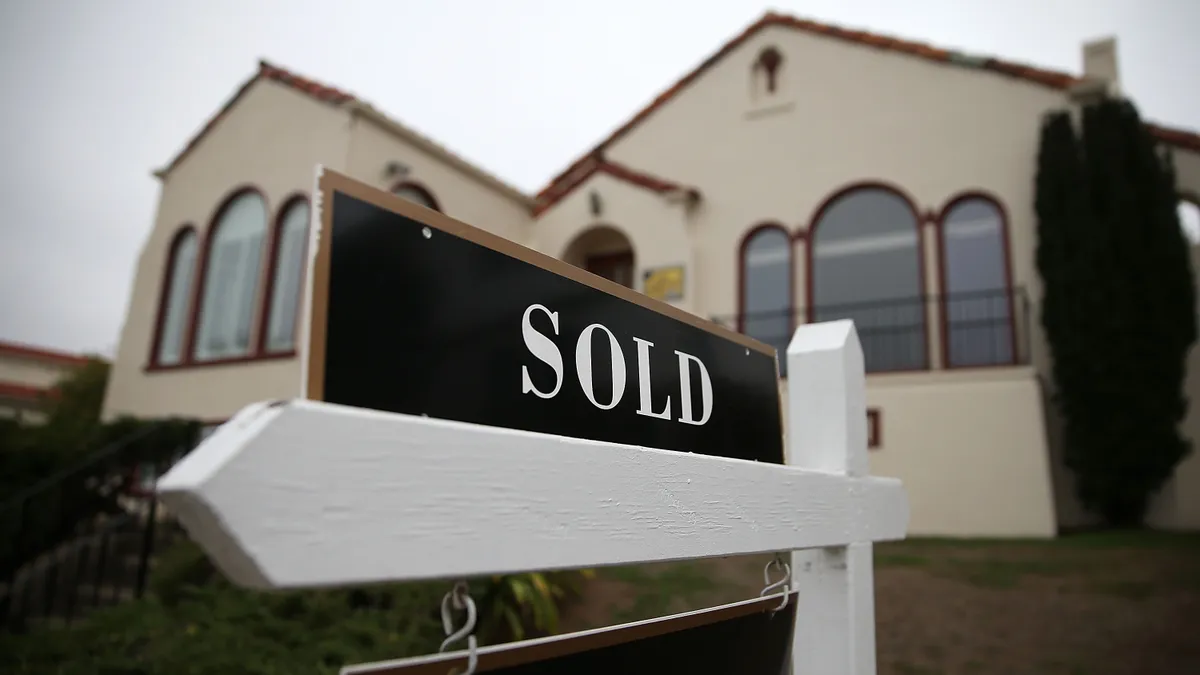Dive Brief:
-
The rate of pending home sales, which indicates the number of U.S. homes currently under contract, increased 1.6% to 109 in December from 107.3 in November, ending the year on a high note, according to the National Association of Realtors’ Pending Home Sales Index released Monday.
-
Of the regions tracked, the West posted the biggest hike in pending home sales in December at 5% to 106.1 and is up 5% from a year ago while the South increased 2.4% to 121.3 and is 0.5% ahead of December 2015. The Midwest dipped 0.8% to 102.7 for the period and is 3.4% lower than a year ago while the Northeast, likewise, saw pending home sales fall off 1.6% to 96.4 in December and are 1.2% behind for the year.
- The index’s December reading is 0.3% above the same period a year ago (108.7).
Dive Insight:
The U.S. saw regional divides in December’s pending home sales, with the South and the West posting the strongest activity. According to NAR Chief Economist Lawrence Yun, supply is playing a critical role as sales are coming in strongest on the higher end of the market.
"The main storyline in the early months of 2017 will be if supply can meaningfully increase to keep price growth at a moderate enough level for households to absorb higher borrowing costs,” Yun said in a release. “Sales will struggle to build on last year's strong pace if inventory conditions don't improve."
Still, while pending home sales rebounded in December, existing-home sales trailed off during the month, albeit closing out 2016 with sales at their highest level in a decade. New-home sales turned out a similar performance for the month, coming up short of analyst predictions. Both metrics come as signs of the housing market’s continued struggle to establish an even pace of recovery following the recession.
With tight inventory, low lot availability and a continuing skilled-labor shortage posing challenges for builders looking to create new stock that would alleviate price pressure from demand, entering the market could remain difficult for potential first-time buyers.
Housing affordability, in turn, reached an eight-year low during the fourth quarter, according to a report from RealtyTrac. As home-price gains continue to surpass wage growth, coupled with tight inventory, homes typically targeting first-time buyers — a demographic crucial to stabilizing the market’s recovery — saw a 12.1% decline year-over-year in the same quarter, Trulia reported.
For more housing news, sign up for our daily residential construction newsletter.













